 Nasa scientists have said they could be on the verge of a breakthrough in their efforts to forecast earthquakes. Researchers say they have found a close link between electrical disturbances on the edge of our atmosphere and impending quakes on the ground below.Just such a signal was spotted in the days leading up to the recent devastating event in China.They have teamed up with experts in the UK to investigate a possible space-based early warning system.Many in the scientific community remain deeply sceptical about whether such signals are indeed indicators of an approaching earthquake.But Minoru Freund, a physicist and director for advanced aerospace materials and devices at Nasa's Ames Research Center in California, told BBC News: "I do believe that we will be able to establish a clear correlation between certain earthquakes and certain pre-earthquake signals, in an unbiased way.He added: "I am cautiously optimistic that we have good scientific data, and we are designing a series of experiments to verify our data."Despite years of searching for earthquake precursors, there is currently no method to reliably predict the time of a future earthquake. Yet, most scientists agree that some form of early warning system could save tens of thousands of lives.The ionosphere is distinguished from other layers of Earth's atmosphere because it is electrically charged through exposure to solar radiation.On a significant number of occasions, satellites have picked up disturbances in this part of the atmosphere 100-600km above areas that have later been hit by earthquakes.One of the most important of these is a fluctuation in the density of electrons and other electrically-charged particles in the ionosphere.
Nasa scientists have said they could be on the verge of a breakthrough in their efforts to forecast earthquakes. Researchers say they have found a close link between electrical disturbances on the edge of our atmosphere and impending quakes on the ground below.Just such a signal was spotted in the days leading up to the recent devastating event in China.They have teamed up with experts in the UK to investigate a possible space-based early warning system.Many in the scientific community remain deeply sceptical about whether such signals are indeed indicators of an approaching earthquake.But Minoru Freund, a physicist and director for advanced aerospace materials and devices at Nasa's Ames Research Center in California, told BBC News: "I do believe that we will be able to establish a clear correlation between certain earthquakes and certain pre-earthquake signals, in an unbiased way.He added: "I am cautiously optimistic that we have good scientific data, and we are designing a series of experiments to verify our data."Despite years of searching for earthquake precursors, there is currently no method to reliably predict the time of a future earthquake. Yet, most scientists agree that some form of early warning system could save tens of thousands of lives.The ionosphere is distinguished from other layers of Earth's atmosphere because it is electrically charged through exposure to solar radiation.On a significant number of occasions, satellites have picked up disturbances in this part of the atmosphere 100-600km above areas that have later been hit by earthquakes.One of the most important of these is a fluctuation in the density of electrons and other electrically-charged particles in the ionosphere.Early warning
One study looked at over 100 earthquakes with magnitudes of 5.0 or larger in Taiwan over several decades. The researchers found that almost all of the earthquakes down to a depth of about 35km were preceded by distinct electrical disturbances in the ionosphere.The analysis was carried out by Jann-Yeng Liu, from the Center for Space and Remote Sensing Research in Chung-Li, Taiwan.Though full details have yet to be released, the BBC understands that scientists also observed a "huge" signal in the ionosphere before the Magnitude 7.8 earthquake in China on 12 May.The team at Nasa has also been working with Surrey Satellite Technology Limited (SSTL) in the UK, to investigate the feasibility of a satellite-based early warning system. Stuart Eves, head of business development at the company, told BBC News: "The evidence suggests we're now crossing the boundary in terms of technology readiness."He added: "What we don't know is how big the effect is and how long-lasting it is before the earthquake."Minoru Freund believes other earthquake "precursors" could feed into this system. These include enhanced emission of infrared (IR) radiation from the earthquake epicentre, as well as anomalies in low-frequency electric and magnetic field data.
Rock 'batteries'
Minoru and his father Friedemann Freund, also from Nasa Ames Research Center, developed the scientific theory behind these earthquake precursors. It boils down to the idea that when rocks are compressed - as when tectonic plates shift - they act like batteries, producing electric currents."We now pretty much understand the solid-state physics of these rocks," Minoru added.According to their theory, the charge carriers consist of a specific type of electron, called a phole, which can travel large distances in laboratory experiments.When they travel to the surface of the Earth, the surface becomes positively charged. And this charge can be strong enough to affect the ionosphere, causing the disturbances documented by satellites.When these pholes "recombine" at the surface of the Earth, they enter an excited state. They subsequently "de-excite" and emit mid-infrared light particles, or photons. This may explain the IR observations.Dr Mike Blanpied, a geophysicist at the US Geological Survey (USGS), who is unconnected with the work told BBC News: "At this point, the connection between the laboratory phenomena and processes at work in the Earth has not been demonstrated and is the subject of research."He has two principal criticisms of the work. Firstly, he said the experiments had been done on dry - or briefly soaked - rocks at room temperature and pressure. But deep in the crust, rocks have all their voids filled with mineral solutions and are subjected to high temperatures and pressures.Secondly, he said, the researchers' hypothesis held that rapid changes in stress and strain in the crust began a few days before earthquakes.Dr Blanpied, who is based in Reston, Virginia, said there had never been an observation of rapid strain changes before an earthquake, which meant precursor strains before earthquakes might be too small to have been detected.Minoru Freund agrees that more work is needed to improve on the theory and some of the data. But he said he was planning to work up a proposal for a low-cost, space-borne early warning system based on at least three satellites.
Paul.Rincon-INTERNET@bbc.co.uk
As in the days of Noah...

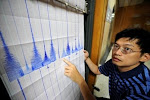
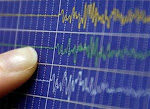








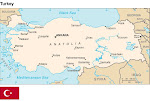
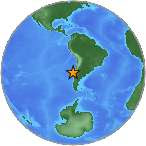




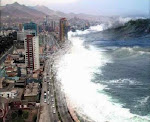

.jpg)


.bmp)
No comments:
Post a Comment